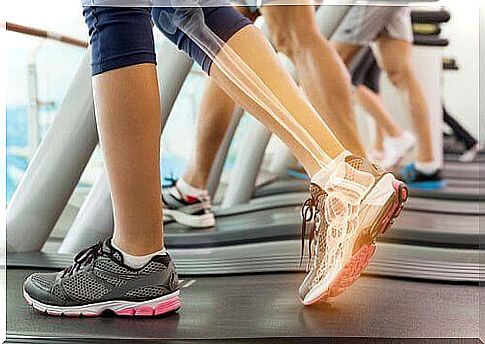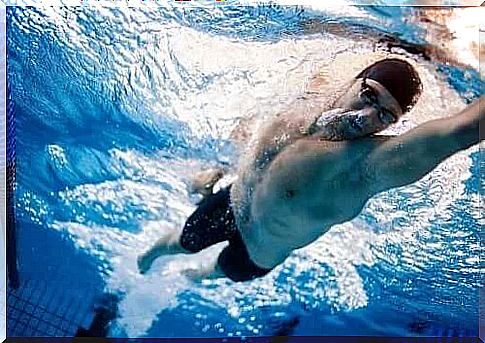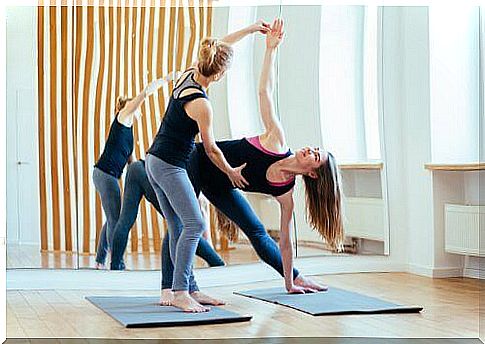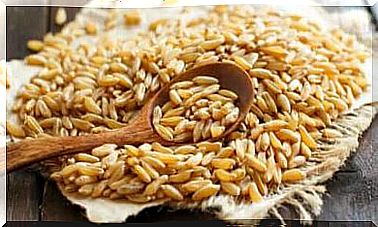5 Forms Of Training For Sensitive Joints

Even if you suffer from knee problems, it should not prevent you from performing regular physical activity. Although some activities can affect your joints, there are several forms of training for sensitive joints.
In many cases, joint injuries are a result of not performing the exercises with the right techniques. Therefore, it is important to talk to a sports specialist who can help you through the process if you have questions about your exercises.
Healthy joints

To improve knee problems, it is important to keep an eye on your weight. This is one of the causes of joint injuries, such as osteoarthritis, tendinitis (inflammation of the tendon sheath) or inflammation of the ligaments.
According to the Arthritis Foundation, each additional 10 kg of weight puts an additional 40 kg of pressure on the knees.
In addition, obesity leads to other health problems, including:
- Hypertension.
- High cholesterol.
- Heart failure.
- Increase in blood sugar and diabetes.
- Fatty liver.
- Arthritis.
Therefore, knee problems should not prevent you from exercising. Instead, it should be an incentive for you. When it comes to exercise, you can perform low impact exercises that take care of your health without affecting your joints.
Therefore, you should choose forms of exercise for sensitive joints
Low-impact forms of exercise that do not affect your joints use less controlled movements. This reduces the pressure on the joints, which are the parts of our bodies that suffer the most when we exercise regularly, when we perform activities such as running, jumping, playing football, tennis, basketball or any other major impact.
However, this does not mean that these exercises do not burn fat and that they do not make you sweat. On the contrary, some of them may challenge you on your muscular and cardiovascular ability.
Also read: 5 simple and effective tips to overcome a knee injury
5 forms of training for sensitive joints
1. Swimming

Swimming is one of the most complete forms of exercise and is also one of the most joint-friendly activities. This is because water reduces the pressure on the body by supporting its weight and dampening any impact.
Swimming incorporates cardio-aerobic exercise with muscle and flexibility requirements. Every swimming style from freestyle to butterfly requires movements in the upper and lower muscles.
Swimming trains more larger muscles in the body than any other type of cardio exercise.
It is estimated that a continuous half hour of swimming can burn between 220 and 270 calories. Therefore, it is an ideal sport for fat burning and toning of your body.
2. Aqua fitness: Example of forms of training for sensitive joints
If you do not like swimming, aqua fitness is an aerobic endurance workout performed while staying in a pool. It is usually supervised by an instructor.
Aqua fitness exercises are similar to those in a normal aerobics class. Adding water increases your stamina while decreasing the impact force.
It takes more effort to go into water and therefore burns more calories than when you do it normally. In aqua fitness, the body looks for energy in fat stores rather than in carbohydrates, as it does in high-intensity exercises.
According to the National Institutes of Health in the United States, one hour of Aqua Fitness burns approximately 520 calories.
3. Rowing

This is another low impact workout that keeps your knees protected and gives you a good workout. Resting requires all parts of the body, from arms to legs, and especially chest and abdominal muscles.
You do not have to live near a lake or a river. You do not even have to have a kayak to row. In fact, you can go to any gym and just use their rowing machines. These machines allow you to regulate the resistance according to your ability and you can perform different intervals at rest.
Half an hour of rowing at a moderate pace can burn between 260 and 300 calories.
Also read: Diet for healthy joints: What you need to know
4. Elliptical training machines
If you have ever been to a gym, you have definitely seen these walking machines that are composed of two foot platforms and two handles. It is called an elliptical exercise machine or a cross-trainer. This machine allows you to get a complete and demanding cardiovascular training with low impact.
The inner pulleys of this unit dampen the impact force of each step and at the same time force the arms to move while the legs move. This increases the intensity and energy consumption.
The elliptical machine mainly trains the muscles in the legs, buttocks, abdomen and in the upper part of the biceps, triceps and chest muscles.
An hour of training with the elliptical machine at medium intensity can burn between 550 and 650 calories.
5. Yoga

Yoga is generally associated with relaxation and stretching postures that require flexibility, but not with fat burning. However, some types of yoga require high energy consumption so that they can help you lose weight.
- Ashtanga Yoga: This is a continuous series of postures that train both resistance and flexibility in coordination with breathing. While training the body intensively, it still retains other benefits of yoga, such as stress relief, relaxation, and spiritual connection.
One hour of Ashtanga yoga burns between 320 and 400 calories
- Bikram Yoga: This type of yoga is practiced in a room with temperatures that reach up to 40 degrees, so the participants sweat a lot. This form of yoga is based on a routine with 26 positions that are always in the same sequence. It is specially designed to strengthen muscles and eliminate toxins. Although sweat is not related to weight loss, you can burn up to 600 calories in one session of Bikram Yoga.
- Power Yoga: This is similar to Ashtanga Yoga, but is more energetic and some consider it even more like gymnastics than yoga. Like Ashtanga, power yoga requires continuous postures. However, they are more persistent and require greater strength.
As this type of yoga is very demanding, it helps to burn between 300 and 400 calories in an hour session.
As you can see, knee pain does not have to prevent you from staying fit and burning fat. However, if you feel any discomfort, it is best to talk to your doctor about which forms of exercise are best for you.









